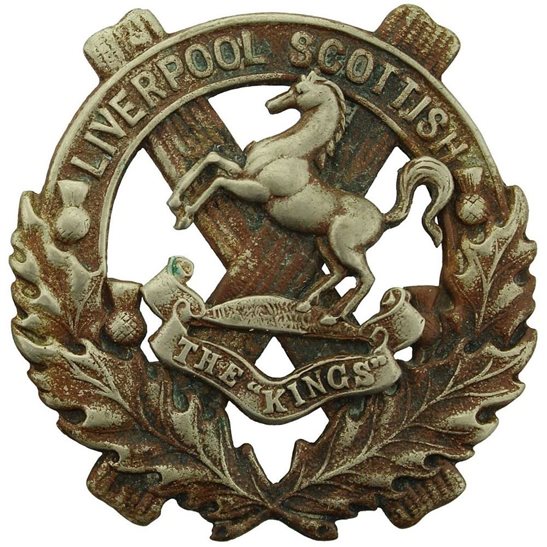Personal Details
Born: John Nason Brownlie on 7 January 1890 in Gayton, Cheshire and baptised on 28 July the same year in Gayton Wesleyan Methodist Chapel.
Family: He was the second of three sons born to John Brownlie, a licensed victualler, and his wife Hannah. John senior died in 1897 and Hannah remarried to Arthur L Richardson; together they had two children, Jack’s half siblings. Jack married Amy Isabella Atherton in 1926 in West Derby, Lancashire and together they had one child, Ian.
Residence: At the time of his baptism the family were living in Gayton; by 1891 they were living in the Gayton Cleggs Arms, Gayton Village, Wirral, Cheshire. In 1901 he was living in Dee View Road, Heswall, Cheshire and in 1911 at 28 Hertford Road, Bootle, Lancashire. In 1939 he lived at 46 Garden Lane, Fazackerley, Liverpool; this was his address at the time of his death in 1952.
Employment: In 1911 he was a clerk employed by Messrs Lee and Sharmlan, solicitors in Dodington, Whitchurch, Shropshire; in 1939 he was an insurance agent.
Died: 20 February 1952 at 107 Rice Lane, Liverpool, aged 62.
Military Details
Regiment: King’s Liverpool (Scottish) Regiment
Rank: Private
Service Number: 3207
Date of Enlistment: 31 August 1914
Date of Discharge: 26 July 1916
Reason for Discharge: No longer physically fit for war service
Other Information: Jack’s brother, Leonard Charles, was accidentally killed by a premature explosion of a grenade on 14 January 1916. Jack lost his right eye as a result of a shrapnel wound in 1915.
Jack was awarded the Campaign Medals (1914 Star, British War Medal and Victory Medal) and Silver War Badge (number 60171)

The 1914 Star (also known as 'Pip') was authorised under Special Army Order no. 350 in November 1917 and by an Admiralty Fleet Order in 1918, for award to officers and men of the British and Indian Expeditionary Forces who served in France or Belgium between 5 August and midnight of 22–23 November 1914. The former date is the day after Britain's declaration of war against the Central Powers, and the closing date marks the end of the First Battle of Ypres.
The 1914–15 Star (also known as 'Pip') was instituted in December 1918 and was awarded to officers and men of British and Imperial forces who served against the Central European Powers in any theatre of the Great War between 5 August 1914 and 31 December 1915. The period of eligibility was prior to the introduction of the Military Service Act 1916, which instituted conscription in Britain.
The British War Medal (also known as 'Squeak') was a silver or bronze medal awarded to officers and men of the British and Imperial Forces who either entered a theatre of war or entered service overseas between 5th August 1914 and 11th November 1918 inclusive. This was later extended to services in Russia, Siberia and some other areas in 1919 and 1920. Approximately 6.5 million British War Medals were issued. Approximately 6.4 million of these were the silver versions of this medal. Around 110,000 of a bronze version were issued mainly to Chinese, Maltese and Indian Labour Corps. The front (obv or obverse) of the medal depicts the head of George V. The recipient's service number, rank, name and unit was impressed on the rim.
The Allied Victory Medal (also known as 'Wilfred') was issued by each of the allies. It was decided that each of the allies should each issue their own bronze victory medal with a similar design, similar equivalent wording and identical ribbon. The British medal was designed by W. McMillan. The front depicts a winged classical figure representing victory. Approximately 5.7 million victory medals were issued. Interestingly, eligibility for this medal was more restrictive and not everyone who received the British War Medal ('Squeak') also received the Victory Medal ('Wilfred'). However, in general, all recipients of 'Wilfred' also received 'Squeak' and all recipients of The 1914 Star or The 1914/1915 Star (also known as 'Pip') also received both 'Squeak' and 'Wilfred'. The recipient's service number, rank, name and unit was impressed on the rim.

The Silver War Badge was issued in the United Kingdom and the British Empire to service personnel who had been honourably discharged due to wounds or sickness from military service in World War I. The badge, sometimes known as the "Discharge Badge", the "Wound Badge" or "Services Rendered Badge", was first issued in September 1916, along with an official certificate of entitlement.

